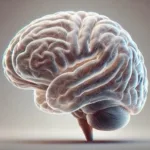Fortunately, There is increasingly more awareness at a social level about the importance of the environment in our biopsychosocial development. In the same way, it is understood that this environment also has an impact on our physical and emotional well-being. For example, every day the harmful effects that pollution has on people are becoming more evident and known.
In fact, although it may still be difficult for some people to believe, the environment in which we live can have a strong impact on our mental health. That is, it can be considered a protective or risk factor for the development of certain mental disorders or pathologies.
Throughout this article we will address the relationship between the environment and the probability of developing ADHD. We will lay the foundations for ADHD and then be able to talk more specifically about the relationship between green areas and mental health. Finally, we will delve into how green areas can help reduce the risk of suffering from ADHD and we will see some recommendations.
Contextualization of ADHD
Attention Deficit Hyperactivity Disorder, also known as ADHD, is a neurobiological disorder that affects millions of children, adolescents and adults. It is mainly characterized by difficulties maintaining attention combined with high impulsivity and motor hyperactivity.
Frequently, the symptoms of this condition tend to manifest in childhood and cause difficulties both in academic performance and in the relational sphere. As a consequence, the emotional area may be affected and other problems may develop. Low self-esteem is often observed in these people.
Although the symptoms begin in childhood—before the age of 12—they usually last until adulthood. However, it has been proven that, in some cases, it decreases with age. The diagnosis must be carried out by specialized mental health professionals after a thorough evaluation.
Green areas and mental health: a proven relationship
There is a branch of psychology called “environmental psychology” and it is dedicated to studying the influence that the physical environment has on people. The main focus is the study of the impact that both built environments (buildings, cities, etc.) and natural environments (parks, green areas, etc.) impact our mental health.
There are multiple studies that demonstrate how contact with nature helps reduce stress, increases the overall feeling of well-being, improves mood and allows better regulation of our autonomic nervous system. Thus, green areas are considered to have a positive impact on people’s mental health regardless of their age.
However, when people live in unfavorable environments they may experience certain symptoms—although, in many cases, it will be difficult for them to relate them to the environment due to lack of information. The most common consequences are chronic stress, the feeling of isolation and the appearance of anxious and/or depressive symptoms.

How do green spaces help reduce the risk of suffering from ADHD?
Today we have a wide variety of studies in which the main research focus has been on discovering the possible relationship between green spaces and the mental health of children and adolescents. The results point to the idea that natural environments are associated with a greater ability to concentrate.
In this sense, other positive aspects for children and adolescents such as a decrease in anxious symptoms, a reduction in behavioral problems and the minimization of other symptoms associated with ADHD. Thus, it is clear that natural environments are necessary for the optimal development of people.
There are also studies that link exposure to nature with the reduction of ADHD symptoms. In these investigations, special emphasis is placed on the importance of factors such as physical activity and favorable perception of the environment.
In relation to the explanations of why this happens, there are different proposals. On the one hand, living in densely populated cities can be a highly stressful factor. So, Living close to nature or having easy access to it can provide people with spaces to disconnect while promoting emotional regulation and cognitive restoration.
In addition, natural environments are usually more associated with greater physical activity and this also provides great benefits to our mental health. Since it allows the release of certain hormones and neurotransmitters, it is associated with a greater capacity for attention and impulse control (aspects affected in ADHD).
Finally, it is also interesting to mention the “theory of restorative care.” It proposes that green areas promote the ability to concentrate while reducing mental fatigue. In this sense, it is considered that the stimuli to which we are exposed in nature favor rest and recharge of the attentional systems.
Conclusion and recommendations
With everything explained so far, it seems more than evident how important it is to live in areas that allow us easy access to natural environments. While it is true that it is not always viable to live in a rural environment, at the very least it is interesting that we do not lose sight of the important role that green areas play in our well-being.
As we have already seen, natural environments encourage physical activity – with its consequent benefits on a physical, mental and emotional level -, help reduce mental fatigue and improve attention and concentration capacity. Since all of this helps to reduce the symptoms of ADHD, it is recommended to prioritize this type of environment as much as possible.
As we mentioned, it will not always be easy to live in a natural environment. In this case, it is interesting to invest the necessary resources to be able to spend quality time in nature as often as possible.









